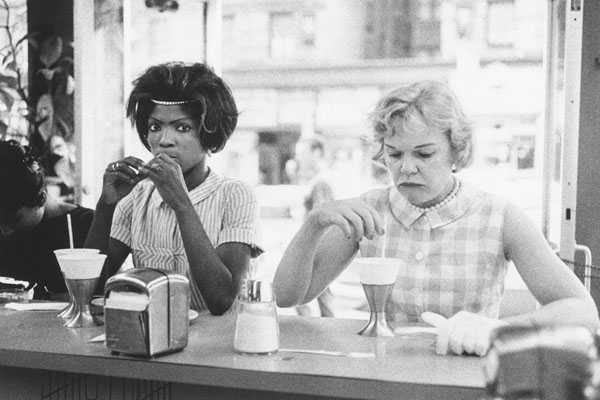Each of the Buddhist monks’ faces tells a variation on the same story. One simmers with fury, another sags with despair, a third is locked in a stoical gaze. The sign they are holding is written in Mandarin — its message the latest piece of sadistic invention by the Red Guards promoting Mao’s Cultural Revolution. ‘To hell with the Buddhist scriptures, they are full of dog farts.’
This is just one tiny photograph in the Barbican exhibition Everything Was Moving (until 13 January 2013). The project takes a gargantuan bite into world affairs in the Sixties and Seventies, so that through the eyes of 12 photographers we revisit such provocative topics as apartheid, Ukraine under Soviet rule, the American civil rights movement, and Mao’s China. The monks’ photo was taken by Li Zhensheng, a news photographer who was also secretly creating what would prove to be the most extensive chronicle of the Cultural Revolution. He hid his work under a floorboard and smuggled it to New York in the Nineties.
It’s both a compliment and a criticism to say visitors should have a season ticket to this wonderful collection. You could lose yourself in any section: the documentary photography of black South African Ernest Cole, the almost hallucinogenic bear fight series of Sigmar Polke, Bruce Davidson’s civil rights portraits (above). Curator Kate Bush told journalists she wanted to explode the distinction between documentary and art. Yet this is just one aspect of an exhibition that seems to straddle not just one era, but several worlds, all of which have continued resonance for the way we live today.






Comments